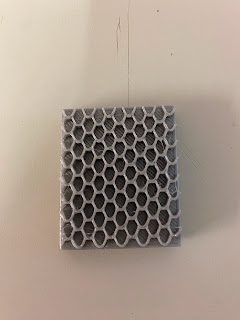The Portrait Today
The Portrait Today
In the modern world, images can be taken and shared globally within seconds, but the desire for a one-of-a-kind commissioned portrait still remains. Artists have responded by depicting the human face and body in more imaginative ways, resulting in a whole new kind of portraiture than the 'typical' portraits we are used to seeing.
Amy Sherald: Michelle Obama
This painting features Obama against a pastel blue sky-like background, with the triangular shape of her dress turning her into a strong, stand alone mountain. The almost gram-scale effect on her skin was intentional, to hint at the 'quieter hints and wants of the black common men and women who have emerged on the linen en grisaille'. Grisaille is a painting technique where an image is made entirely in shades of grey, and then worked into to create the illusion of a sculpture.This is not only an example of modern portraiture, but it is historically significant. It portrays Michelle Obama, the first black First Lady, and is painted by Amy Sherald (along with Kehinde Wiley, who painted Barack Obama), making them the first black recipients of commissions from the National Portrait Gallery.
Shadi Ghadirian: Like Everyday Series 2000-2001
Ghadirian takes photos which draw directly from her own experiences as a modern woman living by the ancient codes of Shariah law. She has used this series to highlight the issue with the traditional roles which women, both in the Middle East and universally, have been defined.This series pictures veiled models with items Ghadirian received after her wedding. Her photos portray an often preconceived idea of who a woman is, someone reduced to the identity of a cook or cleaner, which is hugely prevalent in the world, still, to this day.
Even though you cannot see the woman behind the objects, she uses a brightly coloured chador (the fabric covering the woman's head and upper body, leaving only the face exposed) to suggest individuality and personality within each model. Similarly, the objects used to cover the faces can be seen as a derogatory, or flattering perception of their personality, such as the glove depicting her as someone to clean up after someone else, or the cleaver showing the woman as someone not to be reckoned with.






Comments
Post a Comment